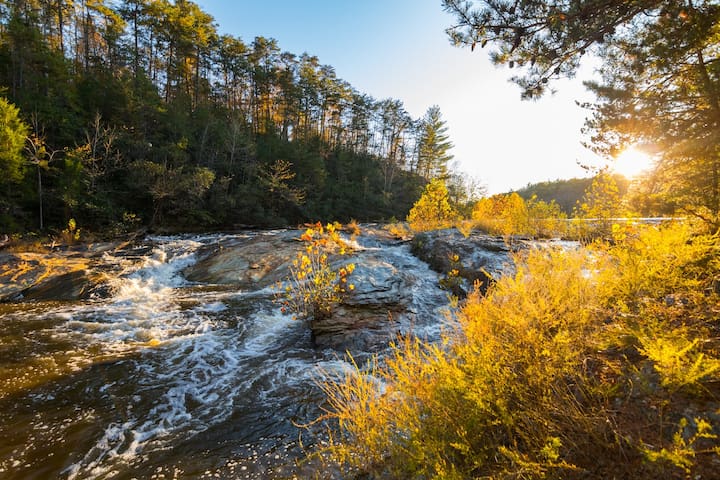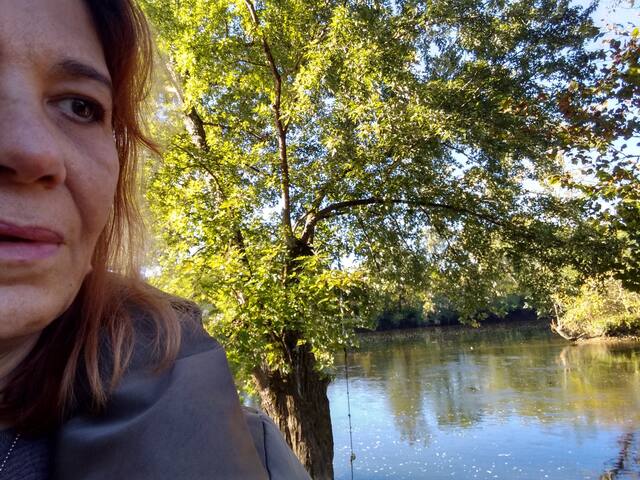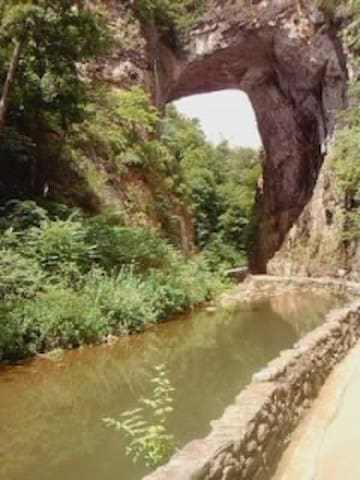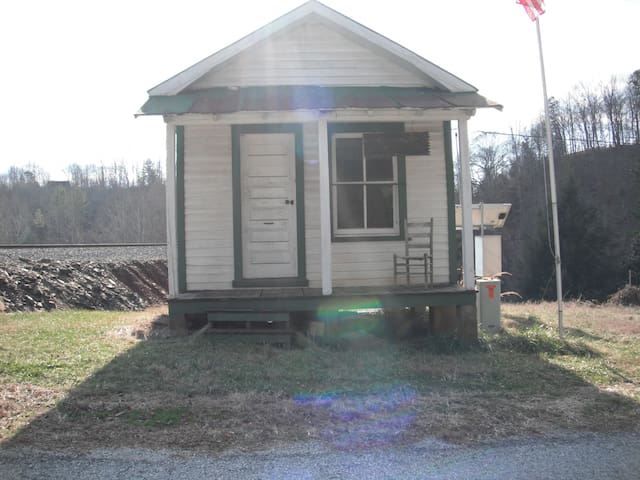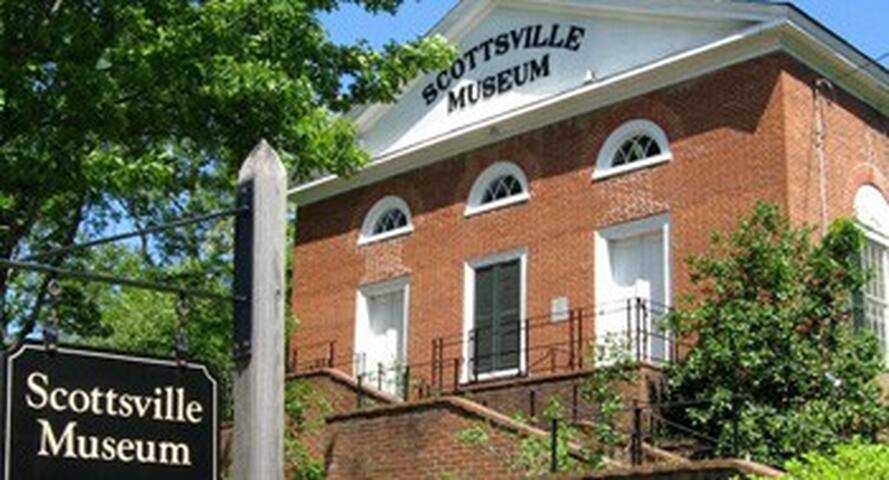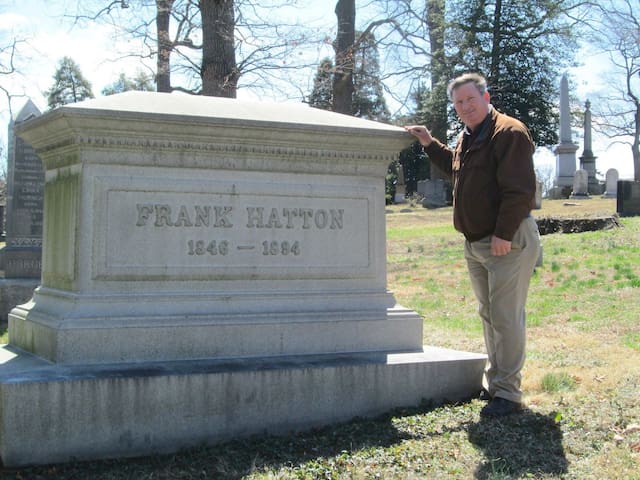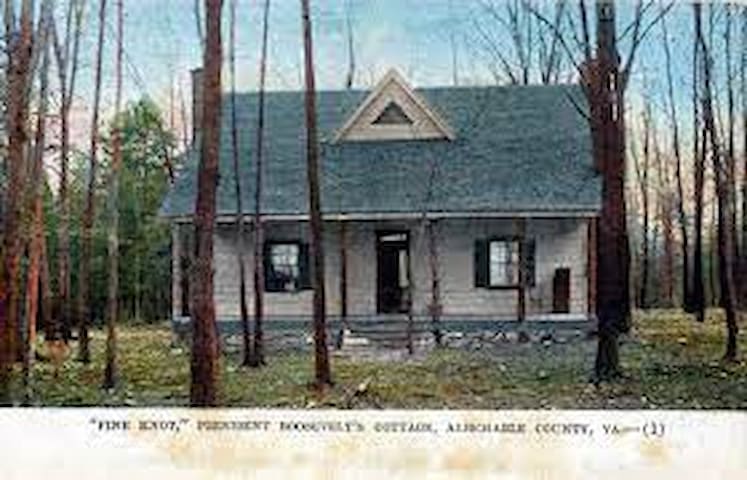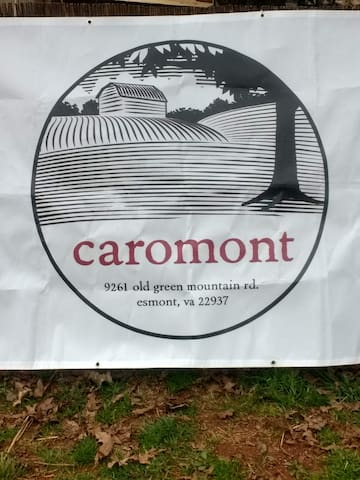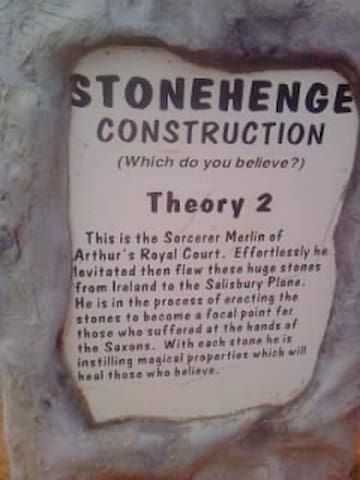PARK
Access: Free, open daily sunrise to sunset
This 209-acre park (69 water acres) offers fishing and hiking opportunities in the Scottsville area. Totier Creek is stocked with sunfish, channel catfish, and largemouth bass.
AMENITIES:
Kayak/Canoe/Boat Launch
Boat Ramp
Fishing
Fishing Pier
Grills - Charcoal
Picnic Tables
Restrooms
Trails
8 íbúar mæla með
Totier Creek Reservoir Park
Access: Free, open daily sunrise to sunset
This 209-acre park (69 water acres) offers fishing and hiking opportunities in the Scottsville area. Totier Creek is stocked with sunfish, channel catfish, and largemouth bass.
AMENITIES:
Kayak/Canoe/Boat Launch
Boat Ramp
Fishing
Fishing Pier
Grills - Charcoal
Picnic Tables
Restrooms
Trails
Hardware River Wildlife Management Area is a 1,034-acre Wildlife Management Area in Fluvanna County, Virginia. Its namesake is the Hardware River which provides a portion of its boundary and runs through its interior; however, it is known for the access it provides to the James River. The area's former farmland today hosts forests of oak, maple, and hickory, with stands of pure pine on the highest ground. Elevations range between 250 feet along the James River's floodplain and 450 feet at the areas highest points. Hardware River Wildlife Management Area is owned and maintained by the Virginia Department of Game and Inland Fisheries. The area is open to the public for hunting, trapping, fishing, hiking, horseback riding, boating, and primitive camping. Access for persons 17 years of age or older requires a valid hunting or fishing permit, a current Virginia boat registration, or a WMA access permit
Fishing for smallmouth bass, channel catfish, largemouth bass, and a variety of sunfish can be excellent from the banks of both the Hardware River and the James. As it flows pass the management area, the James River offers fast water and is best known to anglers for its smallmouth bass and redbreast sunfish.
A concrete boat ramp provides small boat and canoe access to the James River just upstream from the mouth of the Hardware. There is ample room for parking near the boat ramp, and other parking areas are located for access to the upland.
Hardware River Wildlife Management Area
Hardware River Wildlife Management Area is a 1,034-acre Wildlife Management Area in Fluvanna County, Virginia. Its namesake is the Hardware River which provides a portion of its boundary and runs through its interior; however, it is known for the access it provides to the James River. The area's former farmland today hosts forests of oak, maple, and hickory, with stands of pure pine on the highest ground. Elevations range between 250 feet along the James River's floodplain and 450 feet at the areas highest points. Hardware River Wildlife Management Area is owned and maintained by the Virginia Department of Game and Inland Fisheries. The area is open to the public for hunting, trapping, fishing, hiking, horseback riding, boating, and primitive camping. Access for persons 17 years of age or older requires a valid hunting or fishing permit, a current Virginia boat registration, or a WMA access permit
Fishing for smallmouth bass, channel catfish, largemouth bass, and a variety of sunfish can be excellent from the banks of both the Hardware River and the James. As it flows pass the management area, the James River offers fast water and is best known to anglers for its smallmouth bass and redbreast sunfish.
A concrete boat ramp provides small boat and canoe access to the James River just upstream from the mouth of the Hardware. There is ample room for parking near the boat ramp, and other parking areas are located for access to the upland.
The 215-foot tall Natural Bridge is a limestone gorge carved out by Cedar Creek. The park is more than just the bridge; beautiful forests and rolling meadows showcase the area's karst terrain, and vistas of surrounding mountains and the James River valley display nature's splendor. Access these via 7 miles of hiking trails, including Cedar Creek Trail that leads from the park's Visitor Center under the bridge to the Monacan Indian Village and Lace Falls with its 30-foot cascade. Seasonal living history programs connect you to the past and cover how people once used the area's resources for survival and inspiration. Start at the visitor center, where you will find exhibits and a gift shop.
88 íbúar mæla með
Natural Bridge State Park
6477 S Lee HwyThe 215-foot tall Natural Bridge is a limestone gorge carved out by Cedar Creek. The park is more than just the bridge; beautiful forests and rolling meadows showcase the area's karst terrain, and vistas of surrounding mountains and the James River valley display nature's splendor. Access these via 7 miles of hiking trails, including Cedar Creek Trail that leads from the park's Visitor Center under the bridge to the Monacan Indian Village and Lace Falls with its 30-foot cascade. Seasonal living history programs connect you to the past and cover how people once used the area's resources for survival and inspiration. Start at the visitor center, where you will find exhibits and a gift shop.
Unforgettable adventures await at Kings Dominion, home to some of the best things to do around Richmond, Virginia. With more than 60 rides, shows, attractions, a kids area, and a waterpark, Kings Dominion has AMAZING fun for everyone.
New in 2022 is Jungle X-pedition, an immersive x-perience x-ploring an ancient jungle civilization. Take a wild, tumbling ride on Tumbili, Virginia’s first 4D spin coaster.
Find more thrills at our ginormous collection of roller coasters – among the East Coast’s largest at 13 – including Intimidator 305 ®. Little ones can get their own thrills at Planet Snoopy, featuring the entire PEANUTS™ gang.
Soak up the sun at Soak City, our 20-acre waterpark included with admission. Have a splashtastic blast with water slides, splash pads, a wave pool, a lazy river, cabanas, and more! Coconut Shores within Soak City offers a mini-wave pool, 45-foot multi-level play structure, and unique dining.
Experience fun all season long with our world-class events. Celebrate cultures from across the world during our immersive international celebration, Grand Carnivale. Kids can experience AMAZING fall fun at The Great Pumpkin Fest and as the park descends into darkness, fear rises as hundreds of monsters take over the park at Halloween Haunt. Watch the park go from scary to merry as the park transforms into a winter wonderland full of enchantment and holiday cheer with millions of lights, festive shows, and more during WinterFest.
Kings Dominion is filled with AMAZING fun for everyone in the family. Don’t miss out on your chance to make unforgettable memories!
137 íbúar mæla með
Kings Dominion
16000 Theme Park WayUnforgettable adventures await at Kings Dominion, home to some of the best things to do around Richmond, Virginia. With more than 60 rides, shows, attractions, a kids area, and a waterpark, Kings Dominion has AMAZING fun for everyone.
New in 2022 is Jungle X-pedition, an immersive x-perience x-ploring an ancient jungle civilization. Take a wild, tumbling ride on Tumbili, Virginia’s first 4D spin coaster.
Find more thrills at our ginormous collection of roller coasters – among the East Coast’s largest at 13 – including Intimidator 305 ®. Little ones can get their own thrills at Planet Snoopy, featuring the entire PEANUTS™ gang.
Soak up the sun at Soak City, our 20-acre waterpark included with admission. Have a splashtastic blast with water slides, splash pads, a wave pool, a lazy river, cabanas, and more! Coconut Shores within Soak City offers a mini-wave pool, 45-foot multi-level play structure, and unique dining.
Experience fun all season long with our world-class events. Celebrate cultures from across the world during our immersive international celebration, Grand Carnivale. Kids can experience AMAZING fall fun at The Great Pumpkin Fest and as the park descends into darkness, fear rises as hundreds of monsters take over the park at Halloween Haunt. Watch the park go from scary to merry as the park transforms into a winter wonderland full of enchantment and holiday cheer with millions of lights, festive shows, and more during WinterFest.
Kings Dominion is filled with AMAZING fun for everyone in the family. Don’t miss out on your chance to make unforgettable memories!
Spanning the southern and central Appalachians, the Blue Ridge Parkway offers an exceptional glimpse of the regional flora and fauna. It is world-renowned for its biodiversity.
The Parkway covers a wide range of habitats along the Appalachian Mountains, and some of these habitats are exceptionally rare. Visitors encounter unsurpassed diversity of climate, vegetation, wildlife and geological features.
177 íbúar mæla með
Blue Ridge Parkway North Entrance
Blue Ridge ParkwaySpanning the southern and central Appalachians, the Blue Ridge Parkway offers an exceptional glimpse of the regional flora and fauna. It is world-renowned for its biodiversity.
The Parkway covers a wide range of habitats along the Appalachian Mountains, and some of these habitats are exceptionally rare. Visitors encounter unsurpassed diversity of climate, vegetation, wildlife and geological features.
HISTORIC PLACES
Scottsville Museum brings our town's history to life, from its beginnings as an 18th century James River settlement to its shining era as a bustling 19th century river and canal port. Additionally the Museum depicts Scottsville as a center of Civil War activity through its re-emergence as a thriving community in the 20th century. Housed inside the former Disciples of Christ Church, built in 1846, the Scottsville Museum displays permanent and rotating exhibits on James River transportation, the Civil War, Native American artifacts, school life, theater, clothing, toys, furniture, and photographs.
13 íbúar mæla með
Scottsville Museum
290 W Main StScottsville Museum brings our town's history to life, from its beginnings as an 18th century James River settlement to its shining era as a bustling 19th century river and canal port. Additionally the Museum depicts Scottsville as a center of Civil War activity through its re-emergence as a thriving community in the 20th century. Housed inside the former Disciples of Christ Church, built in 1846, the Scottsville Museum displays permanent and rotating exhibits on James River transportation, the Civil War, Native American artifacts, school life, theater, clothing, toys, furniture, and photographs.
Hatton Ferry is a poled cable ferry located 5.5 miles west of Scottsville, Virginia on the James River. It is the last poled ferry in the United States. The ferry crosses the river upstream of Scottsville between Albemarle County and Buckingham County. A seasonal service, the Hatton Ferry operates on a weekend schedule from April to October. In 2009 the Virginia Department of Transportation ended funding and operation of the weekend. Ownership was then transferred to the Albemarle Charlottesville Historical Society as the result of a campaign led by ACHS President Steven G. Meeks. The ferry is now managed by the "Hatton Ferry" a non-profit organization established by the ACHS to oversee the operation of the ferry.
6 íbúar mæla með
Hatton Ferry
10120 Hatton Ferry RdHatton Ferry is a poled cable ferry located 5.5 miles west of Scottsville, Virginia on the James River. It is the last poled ferry in the United States. The ferry crosses the river upstream of Scottsville between Albemarle County and Buckingham County. A seasonal service, the Hatton Ferry operates on a weekend schedule from April to October. In 2009 the Virginia Department of Transportation ended funding and operation of the weekend. Ownership was then transferred to the Albemarle Charlottesville Historical Society as the result of a campaign led by ACHS President Steven G. Meeks. The ferry is now managed by the "Hatton Ferry" a non-profit organization established by the ACHS to oversee the operation of the ferry.
Pine Knot is a historic cabin located 14 miles south of Charlottesville, Virginia in Albemarle County, Virginia. The cabin was owned and occupied by former President of the United States Theodore Roosevelt and his wife Edith Kermit Roosevelt, and used by Roosevelt and the first lady while he was president, although no official business took place there. In 1905, Mrs. Roosevelt spent $280 to purchase the fifteen-acre property with its rustic worker's cabin, and she bought an additional seventy-five acres in 1911. The cabin is owned by the Edith and Theodore Roosevelt Pine Knot Foundation and is open for visits by appointment.
Pine Knot is a rustic cottage near Keene, Virginia, that served as the Albemarle County getaway for President Theodore Roosevelt and his family from 1905-1908. The cottage sits on a knoll above Miller's Creek on a land tract fronting on the old Scottsville Road, now called Route 712. This was the same road used by over 5000 Union soldiers, belonging to General Philip Sheridan's command, on their March 1865 mission to destroy the James River and Kanawha Canal locks near Scottsville.
In May 1905, Edith Kermit Roosevelt purchased this unfinished farmhand's cottage and fifteen acres from William "Willie" Wilmer, an old family friend and owner of Plain Dealing farm nearby. The cottage's purchase price of $280 included the cost of adding a porch plus some remodeling of the cottage's interior. These alterations consisted of adding two end fireplaces, making one 12' x 32' single lodge room of the first floor, and partitioning the second floor into three small bedrooms. Edith named the cottage "Pine Knot" because of the abundance of pine trees surrounding it.
President Roosevelt's first visit to Pine Knot occurred on June 9, 1905, and as described in Teddy's letter to his son, Kermit, he found it to be "a perfectly delightful little place." During that weekend, he rustled up a breakfast of fried eggs and bacon and later surprised his wife by cooking up two chickens. Edith, who did not cook, boiled water from a spring down the hill for their tea. Between 1905-1908, Roosevelt made eight trips to Pine Knot where he enjoyed sitting in a rocking chair, reading books, watching birds, taking long walks, and clearing away small trees blocking their porch view.
Often Pine Knot is described as Roosevelt's hunting lodge because he loved to come there at hunting time.
Pine Knot
Pine Knot is a historic cabin located 14 miles south of Charlottesville, Virginia in Albemarle County, Virginia. The cabin was owned and occupied by former President of the United States Theodore Roosevelt and his wife Edith Kermit Roosevelt, and used by Roosevelt and the first lady while he was president, although no official business took place there. In 1905, Mrs. Roosevelt spent $280 to purchase the fifteen-acre property with its rustic worker's cabin, and she bought an additional seventy-five acres in 1911. The cabin is owned by the Edith and Theodore Roosevelt Pine Knot Foundation and is open for visits by appointment.
Pine Knot is a rustic cottage near Keene, Virginia, that served as the Albemarle County getaway for President Theodore Roosevelt and his family from 1905-1908. The cottage sits on a knoll above Miller's Creek on a land tract fronting on the old Scottsville Road, now called Route 712. This was the same road used by over 5000 Union soldiers, belonging to General Philip Sheridan's command, on their March 1865 mission to destroy the James River and Kanawha Canal locks near Scottsville.
In May 1905, Edith Kermit Roosevelt purchased this unfinished farmhand's cottage and fifteen acres from William "Willie" Wilmer, an old family friend and owner of Plain Dealing farm nearby. The cottage's purchase price of $280 included the cost of adding a porch plus some remodeling of the cottage's interior. These alterations consisted of adding two end fireplaces, making one 12' x 32' single lodge room of the first floor, and partitioning the second floor into three small bedrooms. Edith named the cottage "Pine Knot" because of the abundance of pine trees surrounding it.
President Roosevelt's first visit to Pine Knot occurred on June 9, 1905, and as described in Teddy's letter to his son, Kermit, he found it to be "a perfectly delightful little place." During that weekend, he rustled up a breakfast of fried eggs and bacon and later surprised his wife by cooking up two chickens. Edith, who did not cook, boiled water from a spring down the hill for their tea. Between 1905-1908, Roosevelt made eight trips to Pine Knot where he enjoyed sitting in a rocking chair, reading books, watching birds, taking long walks, and clearing away small trees blocking their porch view.
Often Pine Knot is described as Roosevelt's hunting lodge because he loved to come there at hunting time.
No other home in the United States more accurately reflects the personality of its owner than Monticello. Monticello is the autobiographical masterpiece of Thomas Jefferson—designed and redesigned and built and rebuilt for more than forty years—and its gardens were a botanic showpiece, a source of food, and an experimental laboratory of ornamental and useful plants from around the world.
Guided tours of the house are offered daily throughout the year; outdoor gardens and plantation tours are offered daily April-October. Children under 5 are free. Reduced rates for adult and student groups are available.
HOURS: Hours vary throughout the year; visit www.monticello.org for detailed information on Monticello's operating hours.
Monticello is on Route 53 (Thomas Jefferson Parkway) in Albemarle County, near Interstate 64 Exit 121, approximately 5 miles from downtown Charlottesville and the University of Virginia
635 íbúar mæla með
Monticello
1050 Thomas Jefferson PkwyNo other home in the United States more accurately reflects the personality of its owner than Monticello. Monticello is the autobiographical masterpiece of Thomas Jefferson—designed and redesigned and built and rebuilt for more than forty years—and its gardens were a botanic showpiece, a source of food, and an experimental laboratory of ornamental and useful plants from around the world.
Guided tours of the house are offered daily throughout the year; outdoor gardens and plantation tours are offered daily April-October. Children under 5 are free. Reduced rates for adult and student groups are available.
HOURS: Hours vary throughout the year; visit www.monticello.org for detailed information on Monticello's operating hours.
Monticello is on Route 53 (Thomas Jefferson Parkway) in Albemarle County, near Interstate 64 Exit 121, approximately 5 miles from downtown Charlottesville and the University of Virginia
Food scene
Caromont Farm is located 23 miles South of Charlottesville, Virginia, in the heart of Virginia’s Monticello Wine Region. We are proud to be a woman-owned and run business.
Gail set her sights on farming and cheesemaking. She studied artisan cheesemaking at UVM in Burlington Vermont, and has worked with award winning cheesemakers from The Cellars at Jasper Hill, Grey Barn Creamery, and Uplands Creamery. Her food and farming philosophy is time honored --- delicious and nutritious food comes from animals that eat and live well. Gail’s goats are raised on the sustainable principles of grass-based holistic management. This practice creates vibrant full flavored cheeses of place.
Caromont Farm and their cheeses have been featured in The Washington Post, Food and Wine Magazine, and Culture Magazine, as well as on PBS, the CBS Evening News, and international cooking shows. Gail’s proudest moment was being selected as one of Virginia’s “Women in Food” for the Southern Foodways Alliance in 2013. She continues to live and work on her farm making cheese, teaching “Authentic Food” culinary classes, and spending time with her goats.
Caromont Farm
9261 Old Green Mountain RdCaromont Farm is located 23 miles South of Charlottesville, Virginia, in the heart of Virginia’s Monticello Wine Region. We are proud to be a woman-owned and run business.
Gail set her sights on farming and cheesemaking. She studied artisan cheesemaking at UVM in Burlington Vermont, and has worked with award winning cheesemakers from The Cellars at Jasper Hill, Grey Barn Creamery, and Uplands Creamery. Her food and farming philosophy is time honored --- delicious and nutritious food comes from animals that eat and live well. Gail’s goats are raised on the sustainable principles of grass-based holistic management. This practice creates vibrant full flavored cheeses of place.
Caromont Farm and their cheeses have been featured in The Washington Post, Food and Wine Magazine, and Culture Magazine, as well as on PBS, the CBS Evening News, and international cooking shows. Gail’s proudest moment was being selected as one of Virginia’s “Women in Food” for the Southern Foodways Alliance in 2013. She continues to live and work on her farm making cheese, teaching “Authentic Food” culinary classes, and spending time with her goats.
Sightseeing
The Styrofoam Star’s Humble Beginnings
Originally built as an April Fools’ joke in 2004 in Natural Bridge, Virginia, Foamhenge became an obligatory roadside stop for thousands of travelers. It was featured in a Geico commercial, seen in the television crime drama NCIS, and even used as a question in Jeopardy.
Cline has never been to Stonehenge himself, so he went online to study each rock of the ancient site to ensure it was as accurate as possible. It took him six weeks and about $10,000 to construct.
“It took the Neolithic people, I think, 1,500 years to build it,” he says. “So, they should have used foam.”
In 2017, Cline and Cox made a deal to bring Foamhenge to the family farm on one condition.
“If you want to build a replica of Stonehenge, it’s gotta work,” Cline says.
Many modern-day researchers believe that Stonehenge was built to tell time, essentially as a rudimentary solar calendar. It’s thought it was constructed in stages, starting around 3000 BCE and was finished in 1500 BCE. It was a time when humans were just learning how to farm, and it’s thought that Stonehenge helped them predict seasons, solstices, and even eclipses. So, when Cox brought Foamhenge to the family-owned farm, he called a professional to help. He wanted to ensure the replica was set up exactly the way our ancient ancestors intended it.
Foamhenge
The Styrofoam Star’s Humble Beginnings
Originally built as an April Fools’ joke in 2004 in Natural Bridge, Virginia, Foamhenge became an obligatory roadside stop for thousands of travelers. It was featured in a Geico commercial, seen in the television crime drama NCIS, and even used as a question in Jeopardy.
Cline has never been to Stonehenge himself, so he went online to study each rock of the ancient site to ensure it was as accurate as possible. It took him six weeks and about $10,000 to construct.
“It took the Neolithic people, I think, 1,500 years to build it,” he says. “So, they should have used foam.”
In 2017, Cline and Cox made a deal to bring Foamhenge to the family farm on one condition.
“If you want to build a replica of Stonehenge, it’s gotta work,” Cline says.
Many modern-day researchers believe that Stonehenge was built to tell time, essentially as a rudimentary solar calendar. It’s thought it was constructed in stages, starting around 3000 BCE and was finished in 1500 BCE. It was a time when humans were just learning how to farm, and it’s thought that Stonehenge helped them predict seasons, solstices, and even eclipses. So, when Cox brought Foamhenge to the family-owned farm, he called a professional to help. He wanted to ensure the replica was set up exactly the way our ancient ancestors intended it.

